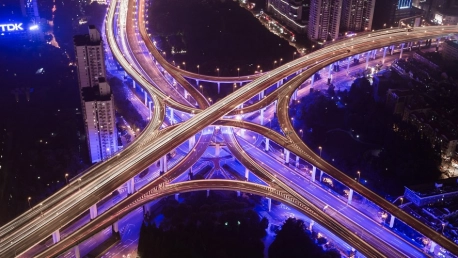The world of the future promises smart homes, monitored and coordinated by smart devices, in smart cities, where everything is interconnected—from tax and traffic systems to bike rentals and tourist information points. Although the term smart city was relatively vague until recently, experts say that we have already reached the inflection point where technology visibly begins its transformation of society.
We Are Entering a New Era of Digitization
Without a doubt, we are moving toward a hyperconnected world, which we can already observe in our lives. We have personal assistants and smart alerts, smart cameras and thermostats, that are part of a long line of devices capable of analyzing data. From voice assistance for the elderly and intelligent patient monitoring systems to hyperconnected smart cities, the expansion of connectivity without human assistance is already announcing its immense potential.
More and more lines of business are joining the new era of digital transformation, which is also being embraced with enthusiasm by individuals. By 2025, it is estimated that there will be approximately 27 billion connected IoT devices. The number of global IoT connections increased by 8% to 12.2 billion active endpoints in 2021. These will bring various individual benefits which, when added up, could bring qualitative leaps in society.
For example, if a person has a heating efficiency tool at their disposal, they will use it for economic efficiency. When everyone can do the same, residential developments will be more environmentally friendly and sustainable. It might seem like a cool trend if ten to twenty people used fully autonomous electric vehicles. If they become the primary mode of transportation, it could have a significant impact on traffic congestion relief and national emission reduction targets.
Companies Are Preparing for the Interconnected Era
As an increasing number of organizations prioritize digital transformation, the adoption of IoT technology is entering an accelerated expansion phase. More users, systems, and devices are being connected every second to a growing range of networks. The COVID-19 pandemic has accelerated this process, as the healthcare crisis has proved that we need technologies that allow us to transcend space to accomplish our tasks no matter where we are. The tech world is heralding the imminent digital leap, a change comparable to the industrial revolution, at least in terms of its impact on the economy and people’s lifestyle.
IoT will surely bring about a revolution in agriculture, by providing all kinds of sensors to monitor soil moisture levels, which will enable the development and deployment of high-precision automatic irrigation systems.
In the healthcare sector, a number of wearable devices, such as biosensors, allow professionals to collect data and monitor patients remotely, so that healthcare is possible beyond the walls of clinics.
Nowadays, companies are collecting vast amounts of data, although other resources are needed to make it truly useful. The way data has been handled so far is wrong, say experts, who point to the difference between a raw volume of data and the stream of processed data that the IoT offers, thus providing a variety of services for its users. IoT is generating massive amounts of data in the process, and its volume is constantly growing. Much of this information could end up as inert digital waste. From this perspective, companies that collect data must employ effective data management and analysis techniques to achieve the most important goal of their entire strategy: meeting customers’ expectations. As devices constantly learn from the combination of this data, they will become increasingly intelligent and capable of delivering higher-quality information, thus improving the decision-making process.
Are We Ready for IoT?
Perhaps we don’t really understand the true potential of this technology yet. Although most new devices are interconnected, we’re still not quite ready for fully autonomous management. But are we ready for IoT?
According to a study commissioned by Cisco, 75% of IoT projects are ultimately unsuccessful. Cisco surveyed decision-makers in the IT or business community in the US, UK and India, trying to examine a variety of industries. One of the things they pointed out is that implementing these new systems requires a significant effort from an organization. 60% of respondents said that IoT initiatives often look good on paper, but prove much more difficult to implement. When listing the top five challenges they have encountered with these processes, they cited time to completion, issues with the lack of skills among staff, data quality, integration between teams, and budget overruns.
The study reveals that successful organizations involved the IoT partners ecosystem at every stage of implementation, meaning that strong and competent allies involved throughout the process, can smooth out the learning curve.
Conclusion
The technologies of the future are already here, and they only need to be refined and innovated over the next decade. The new 5G standards will pave the way for the development of smart IoT devices, and usher in the new decade of digital expansion, a process shaped by AI. Millions of interconnected devices will constantly adapt their performance, and learn both from their use and from each other to improve the lives of their users and society.









